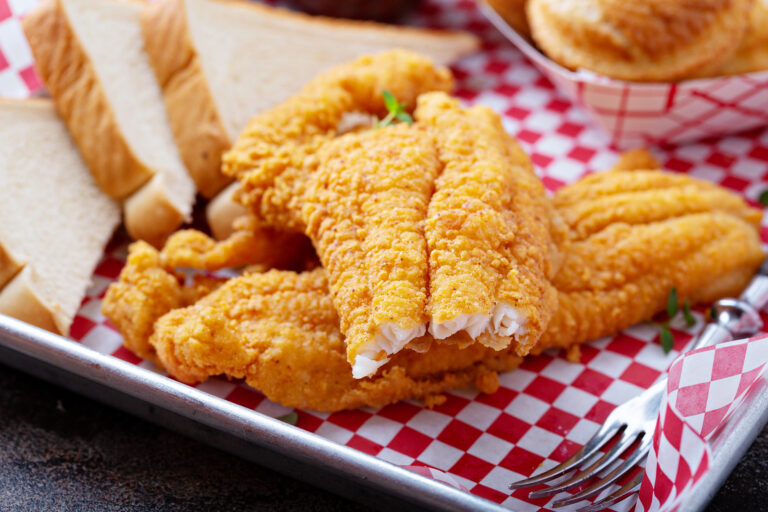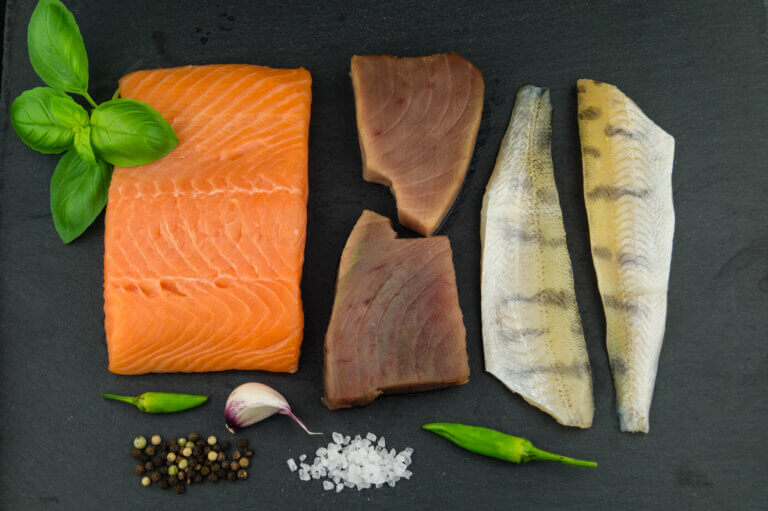5 Differences Between Mahi vs Halibut for Better Seafood Choices
Mahi and halibut differ in appearance, habitat, diet, growth, reproduction, taste, fishing methods, and conservation status, offering unique culinary experiences and requiring responsible enjoyment to ensure sustainability.

When it comes to popular fish in both culinary and sports fishing circles, mahi-mahi, commonly referred to as mahi, and halibut are often at the top of the list. Understanding the differences between these two species is crucial for anglers, chefs, and seafood enthusiasts alike.
Mahi-mahi, a vibrant surface-dwelling fish, contrasts with halibut, a cold-water flatfish prized for its size and texture. Despite both being sought after for taste and sport, mahi and halibut offer distinct experiences due to their unique characteristics, from physical attributes to habitat preferences and culinary uses.
Disclosure: As an Amazon Associate, this site earns from qualifying purchases. Thank you!
Physical Appearance: Mahi vs. Halibut

Mahi are known for their dazzling colors—brilliant green, blue, and yellow hues that fade shortly after they are taken out of the water. They have a slender body shape, a single long dorsal fin that extends almost the entire length of their body, and a sharply forked tail. In contrast, halibut has a more subdued color palette, with a dark upper side to blend with the ocean floor and a white underbelly to camouflage with the sky when viewed from below.
Halibut are flat and diamond-shaped, an adaptation to their bottom-dwelling lifestyle. Their eyes migrate to one side of their body—usually the right—as they mature, which is a common trait among flatfish. This physical adaptation allows them to lie flat on the ocean floor while keeping an eye out for predators and prey.
Habitat and Distribution Compared

Mahi are pelagic fish, meaning they live in the open ocean rather than near the bottom or the shore. They are commonly found in warm oceanic currents and are known to follow floating objects or debris that often house smaller fish and other food sources. Halibut are demersal fish, residing on or near the seabed in colder waters. They are typically found on continental shelves and slopes, with the Pacific halibut inhabiting the North Pacific and the Atlantic halibut the North Atlantic.
The distribution of these fish is influenced by water temperature and depth. Mahi tend to migrate towards warmer waters as they are a tropical species, while halibut are more stationary, preferring the stable environment of the cold ocean floor. This difference in habitat affects not only where these fish are found but also how they are fished, a topic we’ll explore later in this article.
Dietary Habits: What They Eat

Mahi is voracious feeders, primarily consuming small fish, squids, and crustaceans. Their diet reflects their habitat as they feed on the variety of prey available in the open ocean. Mahi are also known for their aggressive feeding behavior, making them a sport fishing target. Halibut are bottom feeders with a diet consisting of other fish, crabs, clams, and sometimes even smaller halibut. Their large mouths and sharp teeth enable them to prey on a wide range of species found on or near the ocean floor.
The feeding habits of mahi and halibut influence their growth rates and size. Mahi’s fast metabolism requires them to eat frequently, contributing to their rapid growth. Halibut’s slower growth is reflected in their more sedentary lifestyle and the energy-efficient way they consume their prey.
Growth and Size: A Clear Contrast

Mahi are among the fastest-growing fish in the sea, with a life span of about four to five years. They can reach lengths of up to 6.5 feet and weigh as much as 88 pounds, though the average is significantly smaller. Halibut grows much larger and at a slower rate, living up to 30 years or more. Pacific halibut can grow to be over 8 feet long and weigh up to 500 pounds, making them one of the largest flatfish species.
The stark difference in growth rates and maximum size between mahi and halibut is a testament to their different life strategies. While mahi grow quickly and reproduce early, halibut invest more time in reaching maturity and achieving their considerable size, which has implications for their reproduction cycles.
Reproduction: Mahi vs. Halibut Cycles

Mahi exhibits prolific breeding, with females spawning multiple times annually and releasing tens of thousands of eggs each cycle to compensate for their short life span. In contrast, halibut follows a different strategy, taking several years to reach sexual maturity, with females releasing fewer eggs once a year. The eggs drift with currents but settle on the ocean floor for larval development.
The contrasting reproductive cycles of mahi and halibut reflect their adaptation to their respective environments. Mahi’s rapid reproduction ensures a high survival rate despite being a target for many predators, including humans. In contrast, halibut’s slower reproduction rate requires careful management to prevent overfishing and ensure the species’ longevity.
Texture and Taste: A Culinary View

In culinary terms, mahi is appreciated for its firm, lean white meat with a mild, sweet flavor profile. It holds up well to grilling and broiling, making it a versatile choice for many recipes. Halibut is also known for its firm texture, though it is flakier than mahi and has a clean, mild taste. It is often considered one of the finest white-fleshed fish for cooking due to its ability to absorb flavors and its non-fishy taste.
The cooking methods for each fish can be quite different due to their textures. While mahi is often marinated and grilled, halibut is frequently baked, broiled, or pan-seared to preserve its delicate flavor. Both fish are high in protein and low in fat, making them healthy options for seafood lovers.
Fishing Techniques: Mahi vs. Halibut
Fishing for mahi typically involves trolling with lures or baited hooks near weed lines or floating debris where these fish are known to congregate. Sport fishermen often seek out mahi for their acrobatic fight and striking coloration. Halibut fishing, on the other hand, usually requires heavy tackle and bait such as herring, octopus, or salmon guts. Anglers fish for halibut by anchoring or drifting and dropping bait to the ocean floor, where halibut lie in wait for their prey.
The difference in fishing techniques is a direct result of the varying habitats and behaviors of mahi and halibut. While mahi fishing is an active pursuit, often involving sight-casting to individual fish or small schools, halibut fishing is a more patient endeavor, requiring precise bait placement and the ability to handle potentially huge fish.
Conservation Status of Both Species

The conservation status of mahi and halibut is an important consideration for both commercial and recreational fisheries. Mahi are not currently considered overfished due to their rapid growth and reproductive rates. However, management measures such as size limits and seasonal closures are in place in some regions to ensure sustainable populations.
Halibut are more vulnerable to overfishing due to their slower growth and reproductive rates. Strict regulations, including catch limits and size restrictions, have been implemented to protect halibut stocks, particularly in the North Pacific where commercial fishing pressure is high.
Both species are monitored by various international and regional organizations to ensure that fishing practices do not negatively impact their populations. Responsible fishing practices and adherence to regulations are essential for the long-term sustainability of mahi and halibut fisheries.
Cooking Mahi and Halibut: Best Practices

When cooking mahi, it’s important to avoid overcooking to maintain its moisture and texture. Quick cooking methods like grilling or sautéing are ideal, and because of its firmness, mahi can handle robust seasonings and marinades. For halibut, overcooking can result in dry, tough meat, so careful attention should be paid to cooking time. Wrapping halibut in foil or parchment with a liquid to steam can help preserve its moisture, and gentle seasonings are recommended to complement its subtle flavor.
Mahi and halibut offer versatile culinary possibilities, fitting various tastes and cuisines, whether used in stews, fish tacos, or gourmet meals. Understanding their unique qualities and employing the right cooking techniques can lead to delightful dining experiences. Appreciating the distinct characteristics of mahi and halibut enables responsible and sustainable enjoyment, preserving these species for future generations in both oceans and cuisine.






